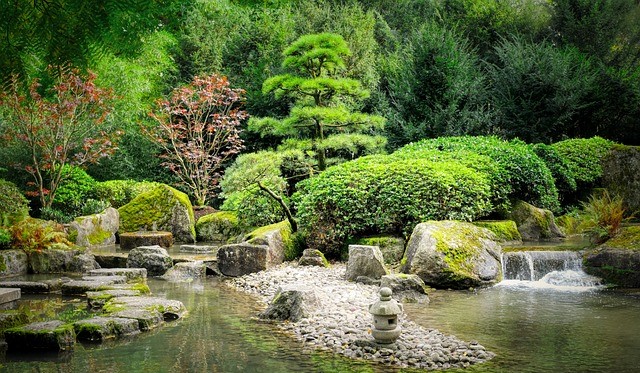A Zen garden is a tranquil and contemplative space designed to evoke a sense of harmony and peace.
Originating in Japan and China, Zen gardens have become popular worldwide for their minimalist aesthetics and the way they invite people to connect with nature and their inner selves.
In this ultimate guide, we will provide a step by step guide to creating a Zen garden, looking at design ideas and practical considerations. So if you want to know how to create a Zen garden, read on!
Zen gardens can provide a calming and restorative space. Successful design elements include gravel, sand, water and key plants like moss, bamboo and acer trees.
Step 1: Understanding The Key Elements Of Zen Gardens
It is good to have a basic understanding of the basic principles of Zen gardens and what their main elements are.
Simplicity
- Zen gardens epitomise simplicity in design and aesthetics.
- They avoid unnecessary ornamentation, clutter, or excessive detail.
- The focus is on reducing the elements to their most essential forms.
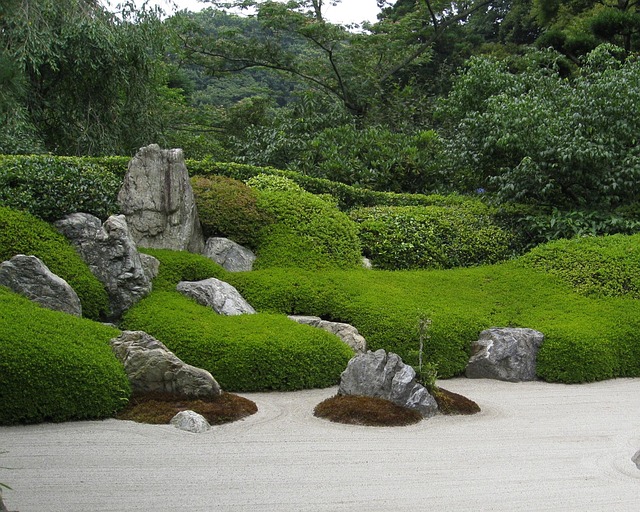
Harmony
- Zen philosophy emphasises the importance of harmony, both in the external environment and within oneself.
- A well-designed Zen garden reflects this harmony through its arrangement of elements and careful attention to balance.
Tranquility
- Zen gardens aim to create a sense of serenity and calm.
- They provide a space for meditation, reflection, and mindfulness.
- The design should evoke a feeling of peacefulness.
Minimalism
- Minimalism is at the core of Zen design.
- It’s about using a limited selection of elements, such as rocks, gravel, and plants, to create a profound and meaningful experience.
Impermanence
- Zen teachings often emphasise the impermanence of life.
- Zen gardens reflect this idea by using elements that change with time, such as raked gravel patterns that evolve with the wind.
- Cherry trees are a stunning and classic component of impermanence, with the beautiful blossoms lasting only a few weeks in the spring, and then the petals drifting down as the wind blows.
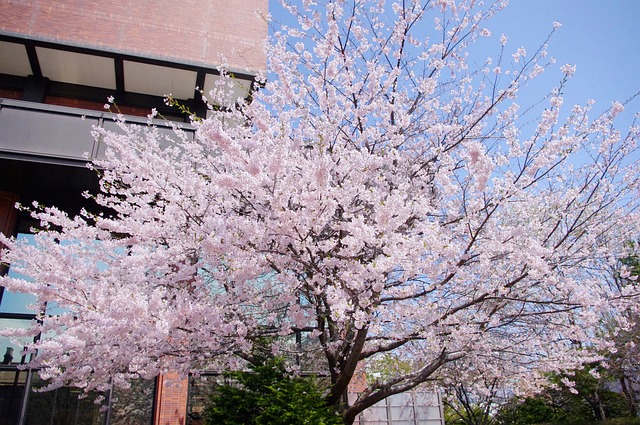
Step 2: Designing Your Zen Garden
Designing a Zen garden involves careful planning and attention to detail. A well thought out plan will save time later on. You don’t have to stick to it exactly but having some structure will make it easier to include all the elements you want while maintaining balance and harmony.
Choose A Style – What Is The Difference Between Japanese And Chinese Zen Gardens?
- Both Japan and China have forms of Zen gardens.
- Japanese rock gardens or karesansui are usually dry gardens with gravel and stone used to emulate water.
- In general Japanese gardens are more minimalist.
- Chinese Zen gardens will sometimes have more structures and colourful ornamental elements, and will contain water.
- Chinese Zen gardens are more likely to have hidden areas and different “rooms”.
Layout and Arrangement
- Choose the right location. The ideal spot should provide a sense of seclusion and tranquility while allowing you to connect with nature.
- Begin by sketching the layout of your garden on paper.
- Determine the placement of rocks, gravel, and any other elements.
- Balance and harmony are key, so strive for a sense of equilibrium in your design.
- Think about the size of the space you have available, Zen gardens can vary in size from a small courtyard garden to a larger outdoor space.
- Ensure that your chosen location receives the appropriate amount of sunlight for the plants you intend to include in your garden. Some Zen gardens are shaded, while others have lots of sunlight.
- Consider how easy it is to access your Zen garden. It should be a place where you can go to unwind and meditate without disturbances.
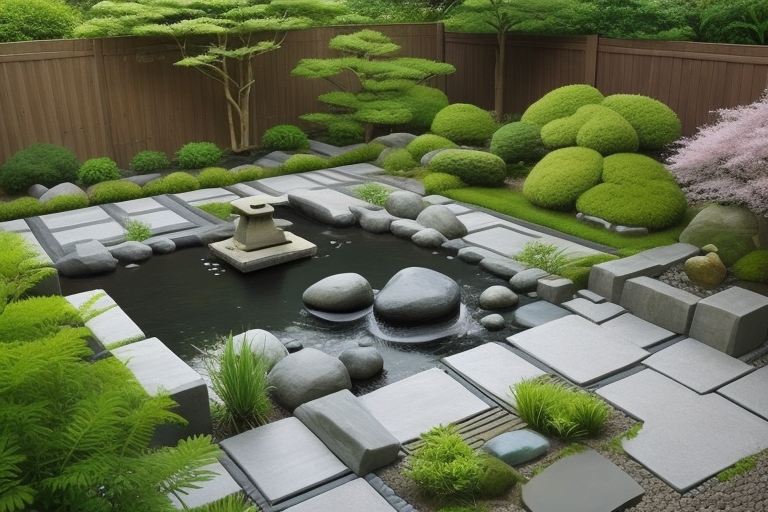
Symbolism, Balance and Asymmetry
- Each element in your Zen garden should have symbolic meaning.
- Rocks represent islands or mountains, gravel symbolises water, and plants signify life.
- Have a think about the elements that resonate with you and the message you want your garden to convey.
- Zen gardens often use asymmetrical arrangements to create visual interest, however there should still be a sense of balance and harmony in the overall design.
Focal Points
- Consider adding a focal point, such as a large rock, a statue or a carefully placed tree, to draw the eye and create a sense of depth in your garden.
- Another option, if you have the means, is to create a traditional Chinese “Moon Gate” which is a circular opening in a wall that provides a window into the area beyond.

The Borrowed Landscape
- This technique, called “Shakkei” and originating in Asia, uses the surrounding landscape to blend into the view of the garden.
- This both anchors the garden in the existing scenery and also makes it look bigger.
- One method is to use dwarf trees to recreate trees seen outside the garden.
- This creates a series of similar looking tree forms into the distance, extending the eye line out and beyond.
Pond or Water Feature
- While not necessary, having water nearby can enhance the ambience of a Zen garden.
- The sound of flowing water, such as a small fountain or stream, can be soothing.
- A reflective pool or pond will create interest and attract wildlife. Add water lilies for colour and beauty.
- If you don’t have the means for a large water feature, a simple container filled with rainwater and some plants will serve perfectly, just make sure that wildlife can access it safely without falling in.
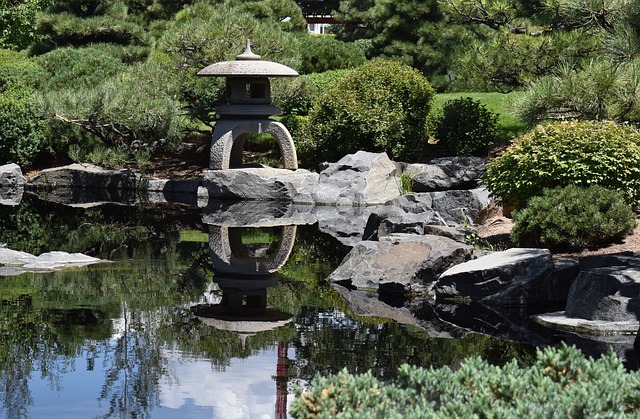
Paths and Bridges
- If space allows, incorporate paths and small bridges made of bamboo or wood.
- These features add functionality and movement to your garden.
Raked Patterns
- Raked patterns in gravel or sand represent water.
- These patterns are a form of meditation and can be simple or intricate, depending on your preference.
- If you have a space you can have as a sand or gravel area, this is an authentic addition to your Zen garden.
Lighting
- Think about what lighting you may want and whether you need electricity, or if you can achieve this with solar lighting, lanterns and candles.
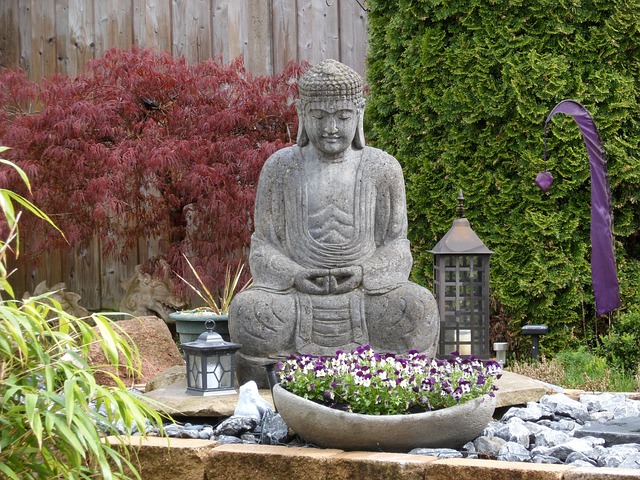
Step 3: The Best Plants For Zen Gardens
While Zen gardens are primarily minimalist, carefully chosen plants add a touch of life and colour.
- Moss is often used for ground cover.
- Bamboo and grasses that swish in the wind are a popular option for movement and sound.
- Climbers like wisteria are a beautiful addition for vertical interest.
- Ferns, with their intricate leaves are another great choice and are happy in shaded areas.
- Dwarf conifers and firs can be “cloud shaped” to create interesting shapes or to mimic the borrowed landscape.
- Larger trees can serve as stunning focal points.
- Acers are a classic choice with green, red, yellow and orange leaved versions available.
- Cherry trees provide blossom in the spring and autumn colours as the leaves change.
- These can be expensive to buy as mature trees from garden centres, so if you don’t mind waiting you can buy much smaller, younger versions online for a lot less and wait for them to grow.

Step 4: Gathering Materials and Tools
Before you begin building your Zen garden, gather the necessary materials and tools. The specific elements will vary depending on the style and size of your garden, but here are some fundamental components and where you will be able to find them.
Rocks
- Rocks are a central element in Zen gardens.
- They represent islands or mountains and symbolise stability and longevity.
- Choose a variety of sizes, shapes, and colours to create visual interest.
- Rocks can be purchased from stonemasons, garden centres, or local Buy, Sell and Swap sites. Bear in mind the weight when choosing larger pieces and make sure you can move them safely.
Gravel or Sand
- Gravel or sand is used to create the “sea” or “ocean” in your Zen garden.
- It serves as a blank canvas for raking patterns and can also help with drainage.
- Select a type that complements your design.
- Sand can be purchased from builders merchants and DIY shops.
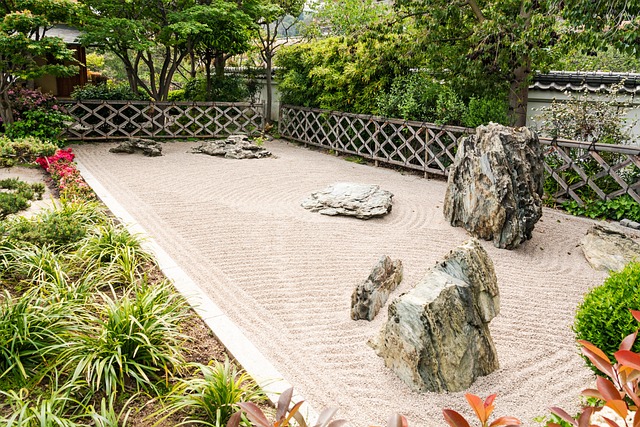
Bamboo or Wooden Elements
- Bamboo fencing, bridges, and wooden elements can add a natural and traditional touch to your garden.
- They enhance the overall aesthetic and can serve as functional components.
- You can make simple pieces yourself if you have the skills. A great (often free) resource is pallet wood. Keep an eye on local websites for people or businesses wanting them to be removed.
Rakes and Tools
- You will need some gardening tools to maintain the plants, as Zen garden elements are usually kept quite neat.
- Shears can be used for trimming hedging, and you may need a lawnmower if you have a grass area.
- You’ll need a rake for shaping the gravel or sand in your garden.
- Gardening tools can be purchased from DIY stores or online, or do what I do and ask for items for Christmas!
- You can also find second hand bargains locally if you keep an eye on community websites.
Step 5: Building Your Zen Garden
Now that you have a well-thought-out design, it’s time to bring your Zen garden to life. Follow these steps to build your garden:
Clear the Area
- Clear any unwanted plants or existing hardscape elements so you have a fresh space to work in.
- Follow your plan and designate each area for planting, water features or the gravel / sand section.
Create The Sand Or Gravel Area
- Ensure that the ground is level and well-prepared.
- You may want to add some edging to make sure the sand or gravel does not blow out. This could be slate, rocks, bricks etc.
- Lay a base of weed-blocking fabric or plastic sheeting to prevent weed growth.
- Then, add a layer of sand or gravel.
- Use a rake or specialised tool to create the raked patterns in the gravel or sand.
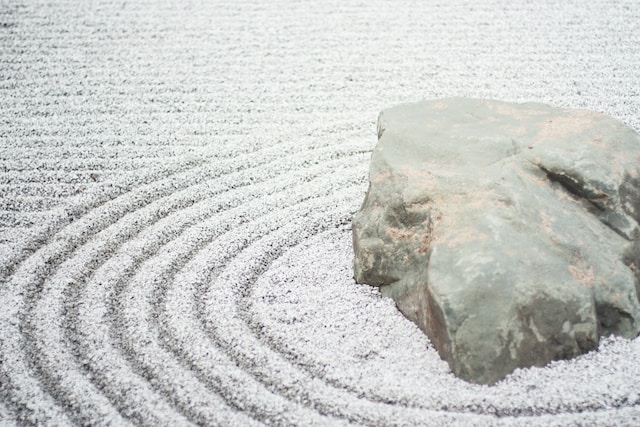
Create Your Water Feature
- This could be a stream, a pond, or even just a simple reflective container.
- Depending on the size and complexity. You may need help with this bit, either from a professional or a friend.
Place Your Rocks
- Arrange your selected rocks according to your design plan.
- Experiment with different placements until you achieve the desired balance and harmony.
Add Plants And Accessories
- Introduce your chosen plants. You can keep them in pots while you arrange them. This will allow you to make sure you have the best positioning before you plant them.
- Remember to allow for growing space, and that you can always add more in the future.
- Add any bamboo or wooden elements, and any additional features like bridges or lanterns.
- Position them thoughtfully within the garden.
Maintain And Care
- Zen gardens require regular maintenance to keep them looking their best.
- Trim plants, brush the paths, rake the gravel or sand as needed, and replace any elements that show signs of wear.
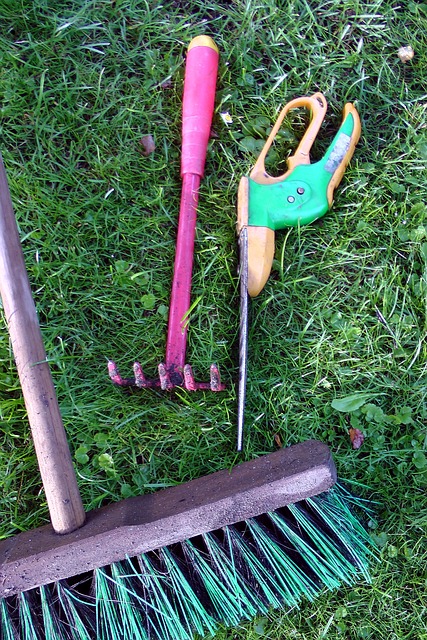
Step 6: Enjoy Your Zen Garden
Once your Zen garden is complete, it’s time to fully embrace its intended purpose – finding inner peace and tranquillity. Here are some tips for using your garden to cultivate a sense of Zen:
Meditation
- Use your garden as a space for meditation and mindfulness.
- Find a comfortable spot to sit or kneel, close your eyes, and focus on your breath or the sounds of nature.
- Practice Yoga or Tai Chi.

What Is Forest Bathing?
- Popular in Japan and many other countries, tree or “forest bathing” is known as “shinrin yoku”.
- This nature therapy involves sitting quietly by trees, under their canopy or moving slowly through the garden, this rejuvenates the mind and soul by replacing everyday stress with an immersion in nature.
- Observe the trees and leaves as they move in the wind, listen to the birds, touch the plants and smell the fresh air.

Contemplation
- Take time to reflect and contemplate the symbolism within your garden.
- Consider the impermanence of life as you observe the changing patterns in the gravel.
Mindful Maintenance
- Approach the maintenance of your garden as a meditative practice.
- Each rake of the gravel or arranging of stones can be a mindful activity.
- Look at pruning, which some people see as a chore, as a calming and constructive action.
Silence and Solitude
- Seek moments of silence and solitude in your garden.
- Turn off your devices.
- Disconnect from the noise and distractions of daily life, allowing your mind to find clarity.
Creative Expression
- Use your Zen garden as a canvas for creative expression.
- Experiment with different raked patterns or add small personal touches that hold significance for you.
- Consider painting or sketching in your Zen garden.
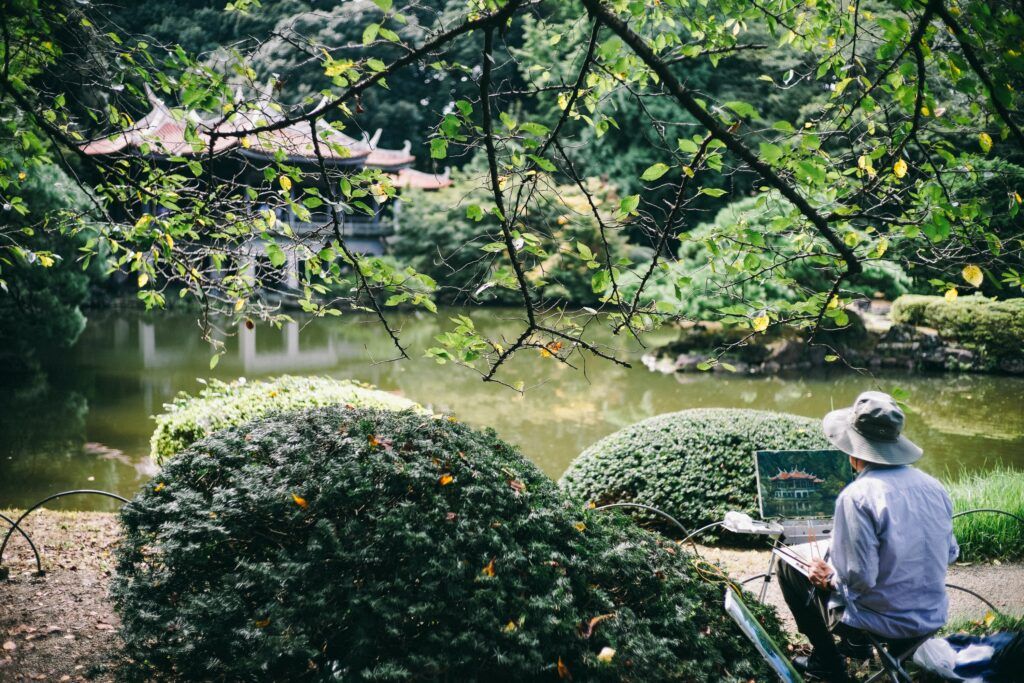
Final Thoughts
Creating a Zen garden means you can provide yourself with a space where you can recharge, connect with nature and discover inner harmony.
In today’s busy world this can be very valuable!
Check out our other articles on creating your own herb garden, tropical garden or rooftop garden!

